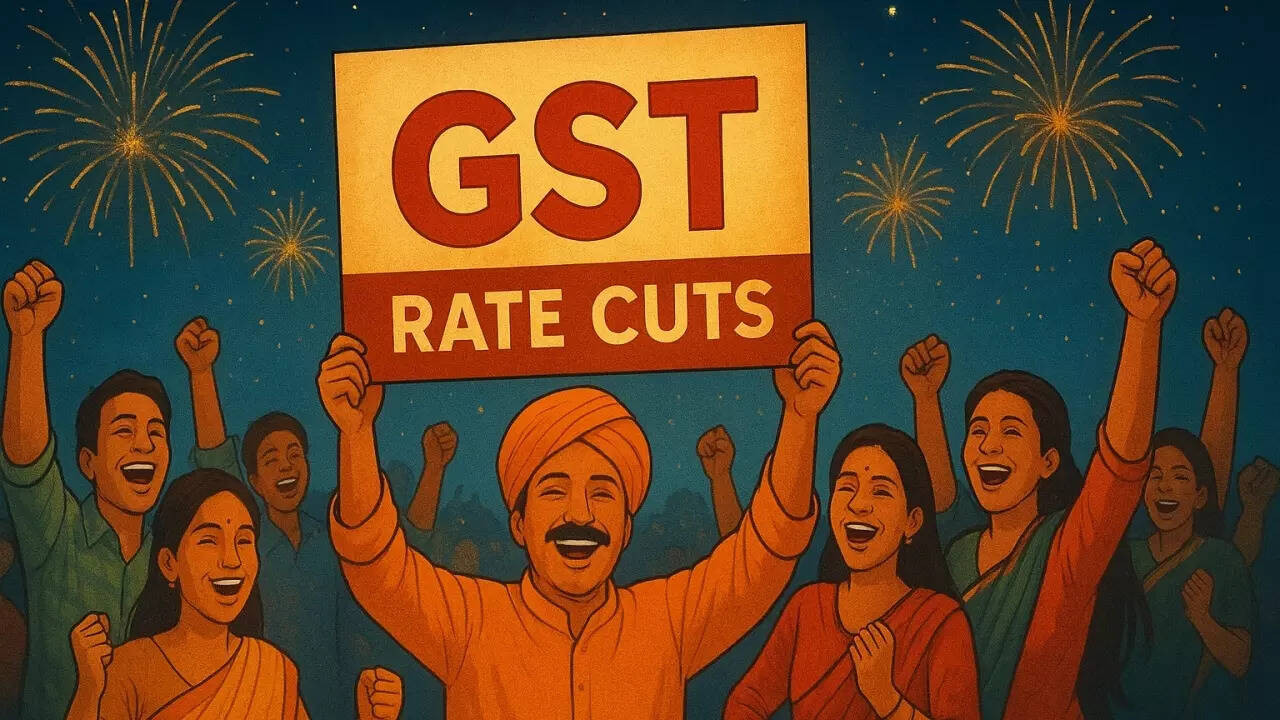Finance Minister Nirmala Sitharaman announced significant GST rate cuts following the 56th GST Council meeting, implementing a two-tier structure of 5% and 18% effective September 22. The rate rationalization, supported by all states, aims to benefit the common man by consolidating rates and reallocating items across tax slabs.
GST Rates Get a Makeover: What it Means for Your Wallet
The world of taxes can often feel like navigating a dense jungle, full of unexpected twists and turns. But every so often, a clearing emerges, offering a clearer view of the path ahead. Recently, we’ve seen just such a clearing in the realm of Goods and Services Tax (GST) in India, with Finance Minister Nirmala Sitharaman announcing significant changes poised to reshape the tax landscape. Forget sifting through endless percentages and confusing classifications; the focus is now on streamlining and simplification.
The most significant takeaway? The ambition to consolidate the current multi-layered structure into a simpler two-slab system. This is no small feat, and while the journey to full implementation may take time, the direction is undeniably towards clarity. The intention is for 5% and 18% to become the two primary GST rates, eventually phasing out some of the complexities that have characterized the system since its inception.
A Shift Towards Simplicity: Rationalizing GST Rates
Currently, the GST structure includes rates like 0%, 5%, 12%, 18%, and 28%, alongside special rates for specific goods like gold and precious stones. This layered approach, while designed to cater to a diverse economy, has often led to confusion and compliance challenges. The move towards two main slabs is designed to simplify tax filing, reduce ambiguity, and ultimately, make life easier for businesses and consumers alike.
Think about it: fewer rates mean less time spent determining the correct tax bracket for your products or services. Less time spent on compliance translates directly into more time focused on growing your business. For consumers, a simplified system makes it easier to understand the tax implications of their purchases, fostering greater transparency and trust.
When Will These Changes Take Effect?
While the announcement has generated considerable buzz, it’s important to The rationalization of GST rates is likely to have a ripple effect across various sectors of the Indian economy. While the specific impact will depend on the goods and services involved, the overall expectation is that simplification will lead to increased efficiency and reduced compliance costs.

Sectors currently subject to higher tax rates could see a boost in demand as prices become more competitive. Conversely, sectors benefiting from lower rates may need to adjust to potentially higher tax burdens. The ultimate beneficiaries will likely be those businesses that are quick to adapt and optimize their operations in response to the changing tax landscape.
Beyond the Rates: Broader Implications
The GST Council’s decisions extend beyond simply tweaking the tax rates. The discussions also touch upon broader issues related to compliance, enforcement, and the overall effectiveness of the GST system. By addressing these underlying challenges, the Council aims to create a more robust and equitable tax environment for all stakeholders.
For example, measures to combat tax evasion and improve audit processes are crucial for ensuring that everyone plays by the rules. Similarly, efforts to enhance taxpayer education and support will empower businesses to navigate the complexities of the GST system with greater confidence. Learn more about [tax compliance strategies](internal-link-to-related-article).
Looking Ahead: A More Transparent and Efficient GST System
The move towards a simplified GST structure is a welcome step towards creating a more transparent and efficient tax system in India. While the journey to full implementation may present challenges, the potential benefits are significant. By reducing complexity, fostering compliance, and promoting economic growth, these GST rate changes could pave the way for a brighter economic future. The focus on fewer, clearer tax slabs aims to improve the ease of doing business, encourage investment, and ultimately, benefit both businesses and consumers across the country.







